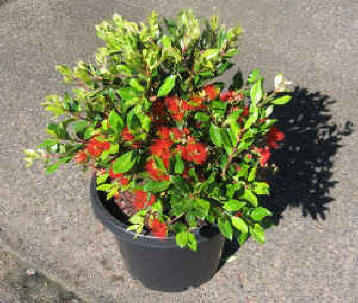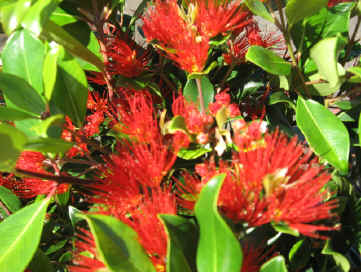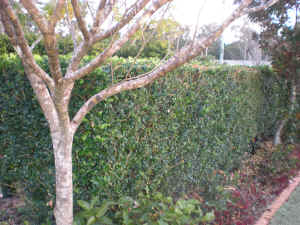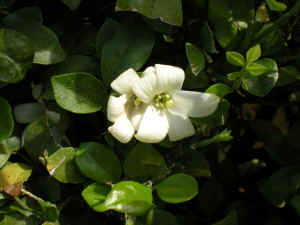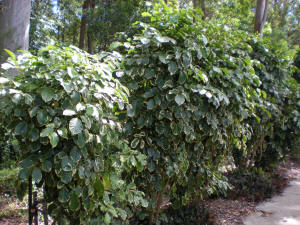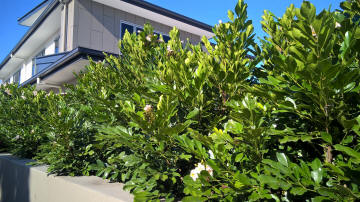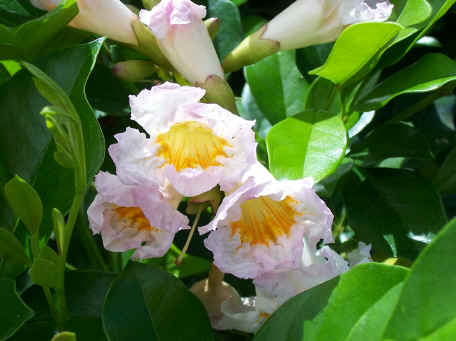Screening Plants and Shrubs
non native
Home Plant
descriptions
Noel's Garden
Vale Robert Percy
History
This page lists some plants that can be used as
screening plants that are NOT lillipillies. Radermachera, Phyllanthus, Camellia,
Ixora, Metrosideros are just some of the plants that can be used successfully.
If you are interested in lillipillies please visit
http://www.aspleynursery.com.au/lillipilly.htm
Camellia
Heliconia
Gold Torch Hibiscus
Psyche red Murraya
paniculata Smart Choice
Metrosideros Little Dugald
Metrosoides Thomasi
Metrosideros
Fiji Photinia
Polyscias
guilfoylei Radermachera
Summerscent
Syzygium Cherry Surprise Viburnum tinus
|
Camellia sasanqua are one of the hardiest and most colourful
screen plants available. They are drought tolerant and are fast growing
once they reach about 1m. I would recommend that the new flush of growth
is lightly pruned so that the plant creates a dense habit and has more
flowers. Each flower only lasts one day but there are so many flowers that
the shrub is only enhanced by the carpet of petals. They like an acid well
drained soil and will grow happily in sun or shade. I would recommend a
spacing of 600mm to create a dense screen quickly. |
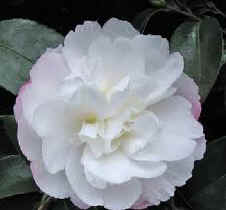 |
 |
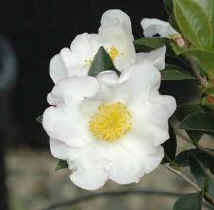 |
|
Pure
Silk
A
Hardy shrub grows in full sun or semi shade. Semi Formal double white
flowers fading to pink edges.
|
Alison
Spragg
Suitable
to full sun or semi-shaded position growing in an upright direction
producing Rose pink semi-double flowers.
|
Setsugekka
Will
grow in full sun or semi shade with large single white flowers with
fluted petals.
|
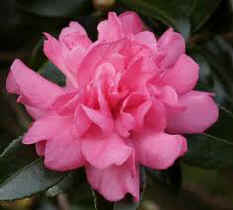 |
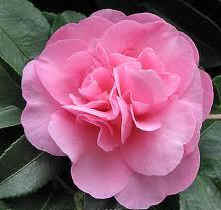 |
|
|
Sparkling
Burgundy
Vigorous
upright growing evergreen shrub preferring well lit position with
rose pink flowers.
|
Jennifer
Susan
Fast, upright
growth. Excellent as specimen or for hedge.
Flowering mid-March to mid-June producing flesh pink flowers. |
|
 |
 |
| Heliconia is one of the signature plants for tropical gardens in
Queensland and probably one of the toughest is Heliconia Gold Torch. It
will grow in full sun or semi shade and will flower with glorious gold
upright flowers from spring till late summer. It does not die down in
winter. Growing about 1.2m the large leaves and golden flowers fit
perfectly onto a tropical landscape |
.jpg) .jpg) |
|
| If you are looking for a fast growing screening plant
that flowers throughout the year you can not go past Hibiscus Psyche
Red. It will grow 3-4 meters and will require light pruning to ensure
density in a newly planted hedge but in general it is peat free and fat
growing. |
| One of the most popular plants for years ,
Metrosideros Thomasi has been used in commercial designs especially
seaside resorts. It's reliability and it's flexibility of use makes it a
must on the plant palette. It can be pruned into formal hedges or allowed
to be used as part of an informal screening garden. It flowers heavily
when quite small and the new growth has a silvery appearance that fades
down into a grey green foliage |
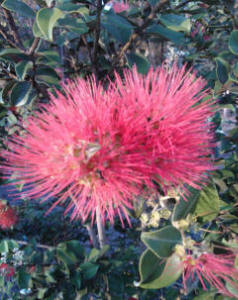 |
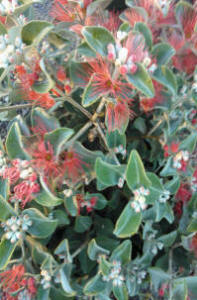 |
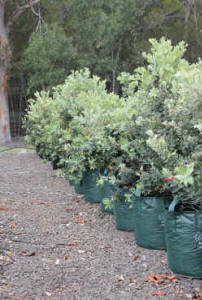 |
| One of the best feature of Metrosideros Fiji
is the brilliant red new growth, as it ages it fades to a glossy red
highlighted leaf. It's flowers are very similar to Metrosideros thomasii
but are not as numerous and only appear as the plant ages. It loves dry
full sun positions and shares the hardiness of the other varieties. They
do need pruning to create a dense plant. |
|
 |
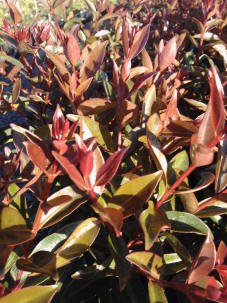 |
|
Though more commonly
grown in the southern states this is still a fine plant for hedging in
Queensland. During winter the leaves turn fire engine red and the
foliage is a counterpoint of deep green. It does need regular pruning to
improve density but more than makes up for this with disease resistance
and overall hardiness. The hedge in this photo is less than one year old
and was planted from 300mm pots. |
|
 |
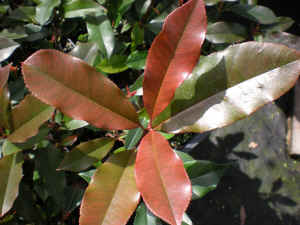 |
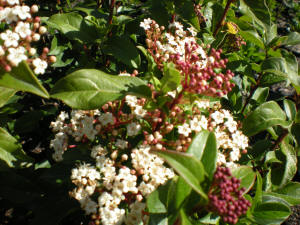 |
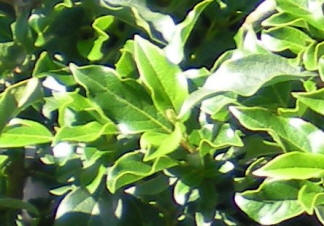 |
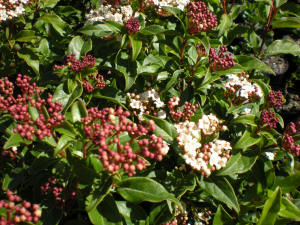 |
| Viburnum Tinus was one of the most popular plants in the
60/70s, it was used as a screening plant. The dark green foliage is
quite dense and with light pruning forms a dense shrub. In spring it
flowers with pink budded heads of flower that open into white flowers.
It likes well drained soil and has few pests. |





.jpg)
.jpg)
